In this guide, I’ll show you how to do local keyword research so that you can win more customers from Google and other major search engines.
Whether you’re a plumber, electrician, handyman, or any other type of trade professional, your business depends on meeting the needs of local customers. One of the main benefits of keyword research is that you can start meeting those needs from the moment a potential customer hits Google to find help with whatever household problem they’re facing.
By doing so, your business can begin to enjoy all the benefits of keyword research, including:
- Boosting your visibility in Search Engine Results Pages (SERPs)
- Attracting more website visitors who are looking for the services you offer
- Increasing your chances of converting those visitors into customers.
So, join me as I talk you through the step-by-step process of how to do local keyword research.
How to Do Local Keyword Research
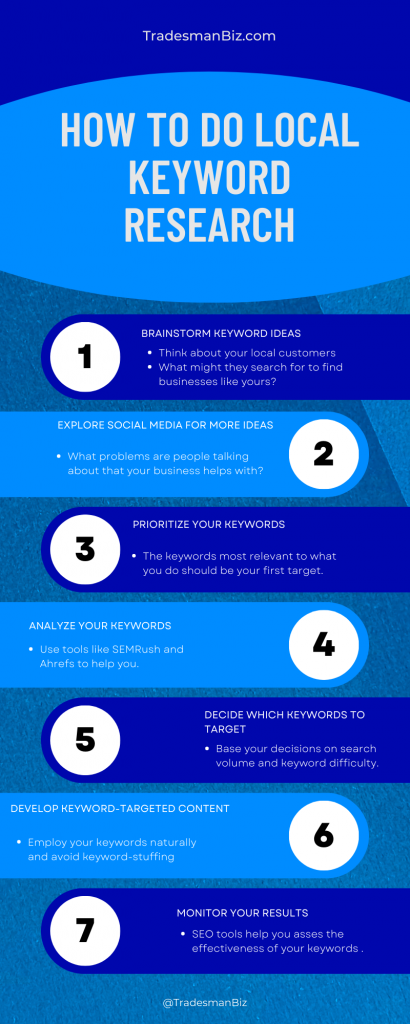
1. Brainstorm a Keywords Ideas List
The first step in learning how to do local keyword research is to brainstorm a list of potential keywords.
This process involves thinking like your target audience and identifying the phrases they are most likely to use when searching for products or services related to your business.
To start your local keyword research process, consider the services you offer and the words your target customers would enter into Google to search for them.
Examples of the kind of words and phrases you might come up with include:
- “Commercial Electrician in New York”
- “Licensed plumber New York City”
- “Drywall contractor near 10279”
Make a list of these words and then expand it by adding related terms and synonyms.
Don’t be afraid to get creative – think about the problems your customers face and the language they use to describe them.
If you’re a plumber, this may mean things like “blocked toilet,” or “taps not running.”
For a painter and decorator, you may be looking at long-tail keywords such as “how long does it take to paint an exterior of a house? “Additionally, you can talk to your customers or potential customers to get a better understanding of the terms they use when searching for products or services like yours.
2. Find More Keyword Ideas on Social Media
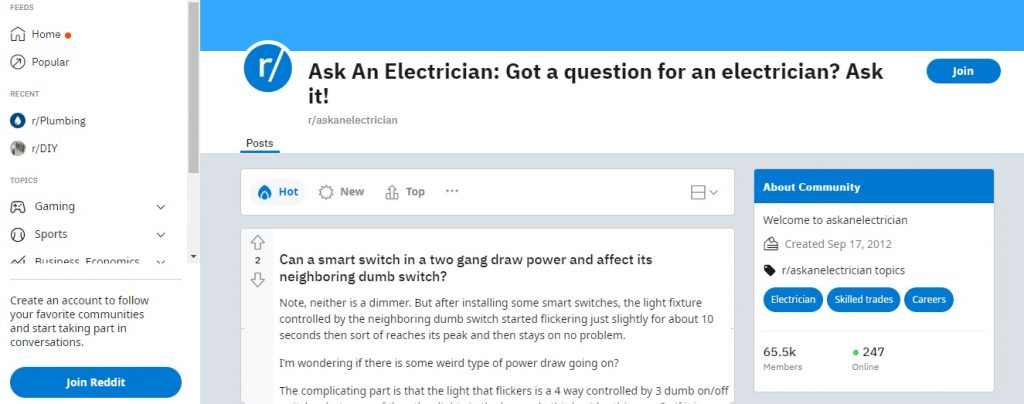
When it comes to local keyword research, it’s important to think outside the box.
While search engines like Google are a great place to start, social media platforms like Twitter, Facebook Groups, and Reddit forums can also be an incredible source of potential keyword ideas.
Why?
Well, these platforms are often buzzing with activity, with scores of people looking for solutions to problems.
For example, by joining local Facebook groups, you’ll find people asking for recommendations for local service businesses. Many of these posts will also include a description of the problems people need help with.
This can provide a wealth of insights into the kind of issues your target customers need help with, so be sure to add them to your ideas list. By diving into these conversations, you can gain a wealth of insights into what people are talking about, what’s trending, and what questions are being asked repeatedly.
3. Prioritize Your Most Relevant Keywords
Coming up with an extensive list of ideas is a good place to start, but the most important step in learning how to do local keyword research is determining which keywords are worth investing your time and resources into.
First, you’ll want to analyze your list of keywords and determine their relevance to your business.
Which keywords are most closely related to your products or services?
These are the ones that should take priority, as they have the highest potential to drive SEO gains and attract relevant traffic to your website.
It’s important to keep in mind that not all keywords are created equal. Some keywords may only have a tenuous link to what you do, while others may be directly related to your core business offerings. By organizing your ideas in terms of relevance, you can ensure that you’re focusing your efforts on the most valuable and impactful keywords.
The reason for this is simple:
Targeting the most relevant keywords can give you the biggest bang for your buck in terms of SEO gains. By prioritizing these keywords, you can establish a strong foundation for your content marketing strategy and set yourself up for success in the long run.
In short, don’t waste your time on keywords that are only marginally related to your business. Prioritize the keywords that are most relevant to your products or services, and you’ll be well on your way to achieving your SEO goals.
4. Run Your Keyword Analysis
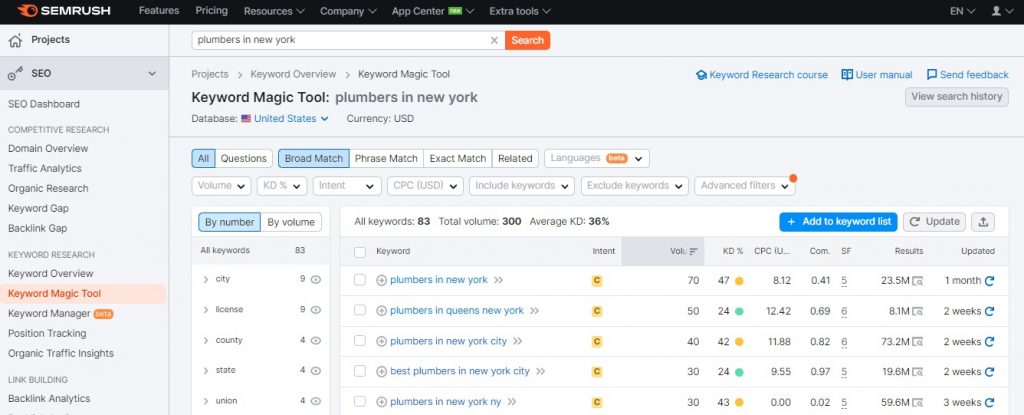
You’ll need a reputable SEO tool for this next step.
I recommend using the SEMRush Keyword Magic Tool as it’s free, easy to use and provides you with a wealth of valuable data that will help you determine which keywords you should build into your website content.
However, if you don’t like SEMRush (and I get that not everybody does), here are a few alternatives:
Whichever tool you prefer to use, the process is pretty much the same:
Pick a priority keyword from your ideas list, enter it into your keyword research tool, and look at the following key pieces of information:
A. Actual Search Terms Used
Sometimes, you hit on a golden keyword idea but don’t use the exact phrase that users enter into search engines.
While that still may produce results, the more closely you can match the actual search term you want to rank for, the better.
For example, if you wanted to rank to attract visitors interested in plumbing services, you could put “plumbing services” into your keyword tool, and it might tell you that the specific keywords those visitors use are “emergency plumbing services,” “residential plumbing services,” and “plumbing repair services.”
By using these specific keywords in your website content and online advertising, you can more effectively target potential customers who are searching for the specific plumbing services you offer.
B. Search Volume
The search volume of a keyword tells you how many times people search for it in a month. If a keyword has a high search volume, that means lots of people are interested in it, and if you can get your website to rank high in the search results for that keyword, you’ll get a lot of visitors to your site.
C. Keyword Difficulty
Keyword Difficulty (KD) is essentially SEO geek-speak for describing how hard it is to get your website ranked in the top 10 results for a specific keyword. The higher the KD score, the more competition there is for those coveted top 10 spots, meaning you’ll need truly outstanding content to earn one.
D. Related Keywords
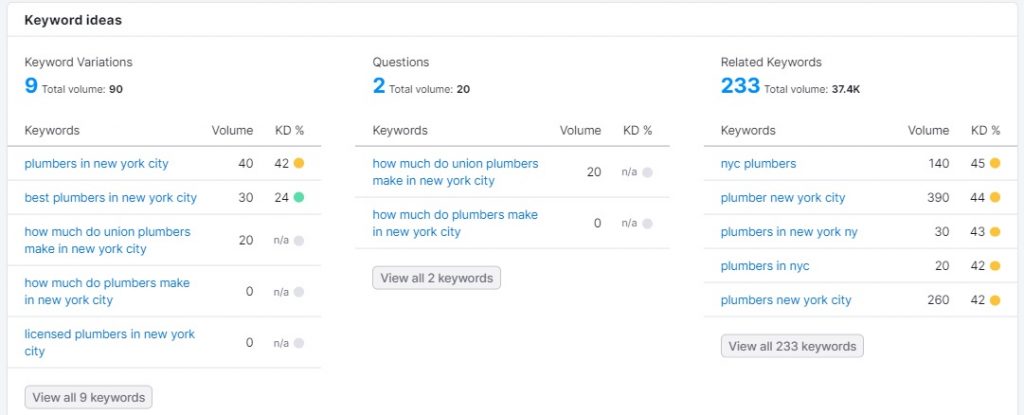
Related Keywords are simply other keywords that are closely related to your main keyword. For instance, if your main keyword is “electrician,” you might also see related keywords like “24-hour electrician,” “emergency electrician,” or “licensed electrician.”
These related keywords can help you identify other areas where your customers might need assistance and give you ideas for content that’s targeted toward their specific needs.
5. Choose Your Keywords Based on the Data
When it comes to local keyword research, gathering data is just the beginning.
You also need to use that data to make informed decisions about which keywords to target with your content.
In an ideal world, your data analysis will find a whole bunch of keywords with high search volumes and low competition.
If you do, go after them with your content because these are the keywords that can help you drive scores of traffic relatively easily.
If you don’t, panic not, dear reader.
There’s still plenty of value to be gained from both High Volume/High Competition and Low Volume/Low Competition keywords.
First, take a closer look at those high-volume, high-competition keywords. Look at what the top-ranking pages are doing to meet users’ needs.
Can you produce better content with the latest research and insights?
Do you have a simpler solution to a common problem?
Can you attract more high-quality backlinks to your page?
Do you have proven expertise or a wealth of experience that isn’t demonstrated on your competitors’ pages?
If so, get to work on creating the absolute best content around those keywords, as they could prove to be a game changer.
However, if you’re not yet confident that you can compete with what’s already out there, focus your energy and attention on those Low Volume/Low Competition keywords.
OK, so they may not drive as many visitors to your site, but they should still drive some traffic, and if you’re new to all this, then these keywords be an invaluable starting point for growing your website.
What’s more, since there isn’t much competition, low-volume keywords can serve as a quick win, helping you establish your site as an invaluable resource for local customers. The more rankings you earn from these keywords, the more your site’s reputation grows, and this can put you on a level playing field with those top-ranking competitors so that you can later go after high-volume rankings.
6. Develop Your Keyword-Targeted Content
Once you have determined which keywords to target, it’s time to start using them in your content, but don’t make the mistake of stuffing your content with your chosen keywords. That’s a quick way to get penalized by search engines and hurt your rankings.
Instead, focus on incorporating your keywords naturally into your content. This means placing them strategically in your headlines, subheadings, and throughout the body of your content.
One good rule of thumb is to aim for a keyword density of around 1-2%.
This means that for every 100 words of content, you should aim to use your target keyword once or twice. However, it’s important to note that this is just a guideline, and your content should always read naturally and flow well.
In addition to using your target keywords in your content, it’s also important to use related keywords and phrases.
These are words and phrases that are semantically related to your target keyword and help search engines understand the context of your content.
For example, if your target keyword is “painters and decorators,” related keywords might include “interior painting,” “exterior painting,” “house painting,” “commercial painting,” and “painting contractors.” These are all relevant terms that potential customers in your area might be searching for when looking for painting and decorating services.
Using related keywords in your content helps search engines understand what your content is about and can improve your rankings for those keywords as well.
Another important factor to consider is the use of header tags. Header tags (H1, H2, H3, etc.) are used to structure your content and help search engines understand the hierarchy of your content.
Using your target keyword in your H1 tag can signal to search engines that your content is relevant to that keyword. In addition, using related keywords in your subheadings (H2, H3, etc.) can help improve your rankings for those keywords as well.
Overall, incorporating your chosen keywords into your content is an important part of an effective content marketing strategy. By using your keywords naturally and strategically, you can improve your visibility in search engine results pages and attract more traffic to your website.
7. Track Your Results
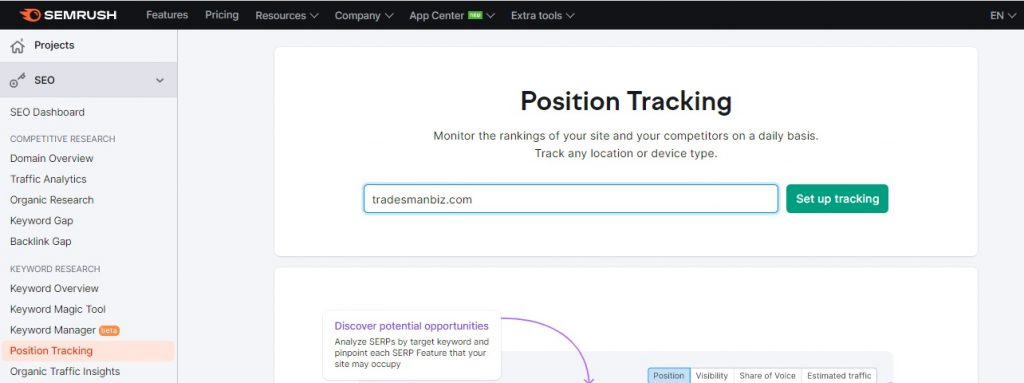
Once you’ve implemented your keyword research and optimized your content, it’s essential to track your keywords’ performance to determine the success of your efforts.
By monitoring your keywords, you’ll be able to see how well your content is ranking in search engine results pages (SERPs), how much traffic your pages are generating, and what your conversion rates are like.
There are three main metrics to track. These include:
A. Ranking Performance
One of the most important metrics to track is your keyword ranking performance. This tells you how well your pages are ranking for specific keywords in SERPs. There are many tools available that can help you track your keyword rankings, including Ahrefs, SEMrush, and Moz. By monitoring your keyword rankings, you can see if your optimization efforts are improving your pages’ search engine visibility.
B. Organic Traffic
Another important metric to track is your website’s organic traffic. This tells you how many people are visiting your site through search engines. If your content is optimized for the right keywords, you should see an increase in organic traffic over time. You can track this using tools like Google Analytics or other website analytics tools.
C. Conversion Rates
Conversion rates are another key metric to measure. This tells you how many people are taking desired actions on your website, such as requesting a quote or booking you for ajob. By monitoring your conversion rates, you can see if your keyword optimization efforts are driving the right kind of traffic to your website.
It’s worth noting that tracking keyword performance is an ongoing process.
Search engine algorithms change regularly, and new competitors may enter the market, so it’s crucial to keep monitoring your keywords over time to ensure your content remains relevant and optimized. By doing so, you’ll be able to stay ahead of the competition and continue driving valuable traffic to your website.
Keyword Research Frequently Asked Questions
What are the different types of keywords?
There are two main types of keywords: head terms and long-tail keywords. Head terms are high-traffic keywords that are often very competitive. Long-tail keywords are low-traffic keywords that are more specific and less competitive.
What are common local keyword research mistakes to avoid?
Avoid these keyword research mistakes:
- Targeting the wrong keywords: Choose keywords that are relevant to your business and have a high search volume.
- Not using keywords enough: Use keywords throughout your content, but don’t overdo it.
- Using keywords too much: Keyword stuffing will only hurt your rankings.
- Not tracking your keyword performance: Track your keyword performance to see how well you’re doing.
What is keyword cannibalization, and how can I avoid it?
Keyword cannibalization is when you have multiple pages on your website that target the same or similar keywords, which can confuse search engines and users and reduce your ranking potential. To avoid this, you should conduct a keyword audit and map your keywords to specific pages. You should also consolidate or differentiate your pages if they have overlapping content or intent.
How to Do Local Keyword Research: A Recap
Learning how to do local keyword research is an essential first step to developing a solid SEO strategy for your business.
By identifying and targeting the most relevant and valuable keywords, you can increase your website’s visibility, attract more qualified traffic, and ultimately drive more conversions.
To perform effective keyword research, it’s essential to utilize a variety of tools and techniques, including brainstorming, competitor analysis, and social media research. By incorporating these tactics into your research process, you can identify high-potential keywords that you may have otherwise overlooked.
By following these best practices, you can develop a comprehensive and effective approach to local keyword research that drives business success.
For more weekly advice on how to start, manage, and grow your business as a self-employed tradesperson or contractor, follow Tradesman Biz on Twitter, Facebook, or Linkedin.

Leave a Reply